For this workbench build, I wanted something that would be both sturdy and simple to construct. This workbench can be built for less than $100, is a rigid design and has a shelf for extra storage. Add on a pegboard back even more space.
Tools needed
Circular saw or table saw
Miter saw or table saw
Jigsaw or bandsaw
Impact driver (optional but really helps – much cheaper if you buy them as a combo)
Lumber & materials
One sheet of plywood – I used 3/4″ Maple. If you use thinner plywood, consider adding additional stretchers to support the top and bottom tabletops and add fasten them down with screws.
(2) 4×4’s – 8 foot length boards – these will be the four legs
(6) 2×4’s – 8 foot length boards – Four of the boards will be the top and bottom lengthwise supports cut to 6′ lengths. The remaining two boards will be cut into the 21″ cross supports.
3.5″ Screws (decking screws work fine)
1.5″ scews to secure the plywood, drywall screws work here
Step one: cut the workbench legs and supports
To speed up the project, I used a miter saw & table and clamped down a scrap board to make a fence. This way, all the cuts can be made quickly and exactly the same length. Since I can’t fit a full sheet of plywood in my car, I had them rip it into two panels, each 2 feet wide by 8 feet long. I decided to go with a 6 foot length for the workbench, 24″ width and a 34″ total height so that it would match my other woodworking bench.
Tip: This bench would make a great extension for a table saw, so for extra versatility, consider building it to the same height as your machine. Remember to add in the thickness of your plywood when determining how tall the legs should be.
Cut list:
(4) 4×4 legs 33 1/4″ length (To bring my table top to 34″ using 3/4″ plywood)
(4) 2×4 front and back supports, 6′ length
(8) 2×4 cross supports (4) and stretchers (4), all at 21″ lengths
Step two: assemble the workbench top
I pre-drilled all screws using the flip drive drill bit, it saved a ton of time. I used 3.5″ decking screws when attaching everything except the plywood, where I used 1.5″ drywall screws. I started by assembling the top of the workbench first. This is much easier if you have a somewhat flat basement floor. Unfortunately, I don’t have that, so I had to use a combination of my existing workbench and some scrap plywood as flat surfaces. Use clamps to hold pieces in place while you screw them together.
First, attach one of the 21″ long 2×4’s to the top of each pair of your 4×4’s.
Then, Attach two of the 6′ long 2×4’s to the tops of the 4×4’s. You want all of these boards to extend beyond the edge of the 4×4’s where they will butt against the 21″ 2×4’s that you just attached. I put two screws at each joint, so that they could flex slightly since some of my boards were warped. You can add additional screws to your workbench for support later. There should now be 2×4’s going all the way around the top of your table (note below I have the table upside down).
Step three: assemble the bottom shelf
Flip the workbench so that it is standing up. Then, using the same process as in part two, add another pair of 6′ boards and 21″ boards to the bottom part of your 4×4’s. It is up to you as to how high off the ground the shelf will be. I chose 8″ so that I would have plenty of space for storage and so that my feet won’t bump into them while working when the bench is finished. Use your clamps to help keep the boards in place while you drill them.
Tip: Speed up this step by cutting spacers out of scraps from your 2×4’s that are as long as you’d like your shelf to be off the ground. This both holds your boards at the right height and keeps them level.
Step four: attach the stretchers
Finally, attach two of the 21″ 2×4’s as stretchers and place them roughly 2 feet apart. This will help to keep the top boards from bowing.
Tip: Always use gravity to your advantage. Flip the workbench on its side when screwing in the long boards and stretchers, it makes drilling much easier!
Step five: cut plywood to size & mark notches
I had the plywood ripped to 24″ widths at the store. Since both the plywood top and shelf will be the same size, 24″ wide by 6′ long, stack both on top of each other and clamp down a scrap piece of plywood to act as a fence for your circular saw. Cut both pieces plywood down to 6′ in length. Since the bottom shelf is too big to slide into place as a solid piece, I cross cut it with the circular saw, using the same procedure, into two, three foot long sections.
Tip: Put masking tape over plywood edges to be cut with a circular or table saw, it reduces splintering and makes for smoother cuts.
Step six: cut notches and attach shelf and the table top
Next, measure and mark out slots to be cut on each corner of the shelf that so that it can fit into place against the 4×4’s, they measured about 5″ square. Cut them out on a bandsaw or a jigsaw. Check for fit and trim off excess as needed. Then screw in the shelf and table top.
Step seven: finish!
That’s it! Check the table for movement and add additional screws if some areas show wobble. With just two screws on each joint and only putting screws around the perimeter of the top and bottom, my workbench was solid as a rock! Finish the workbench with some polyurethane for added durability and stain if you’d prefer. You can also easily attach pegboard to the back of the bench for added storage. I used some shoelaces to hang up all my hand planes, it makes them really easy to access!

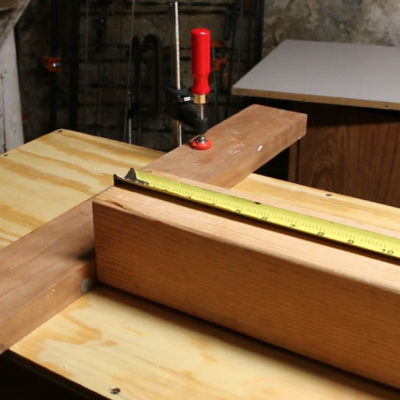
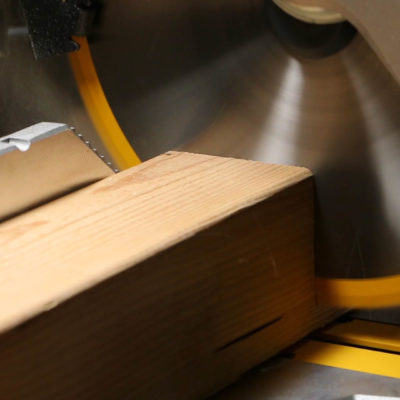



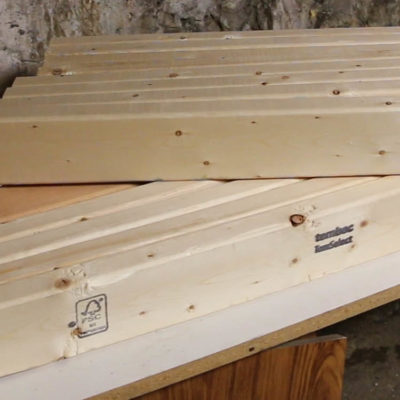








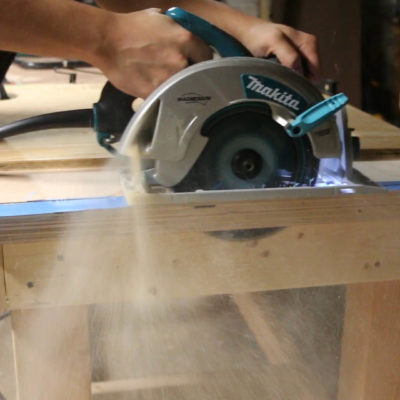


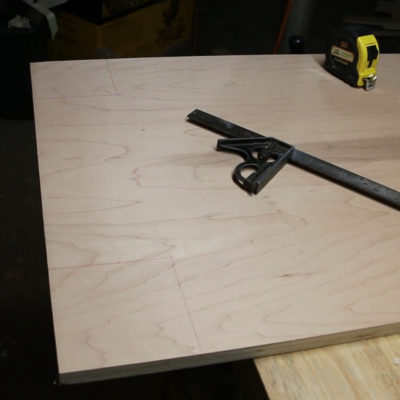

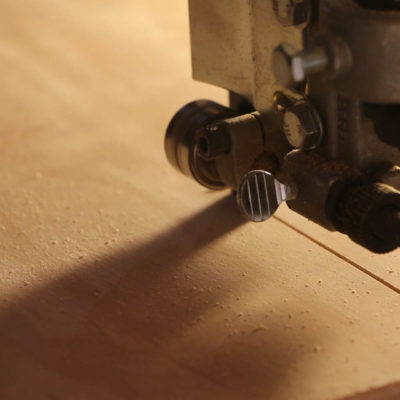



Glenn Lane
Great tutorial. Looking forward to making mine. Thanks
Jeff
Thanks Glenn, please share any pictures of your bench and have fun!
Danny M
This is great I’m a beginner to wood working and I needed a step by step for a work bench and this will fit perfectly thanks looking forward to more projects
Jeff
Danny, it is great to hear from new woodworkers! Good luck on the bench and let me know how it turns out!
Chris
Looks fantastic. How much weight do you think this particular workbench could support?
Jeff
Since the bench uses 4×4’s and with a 3/4″ thick piece of plywod, I’d say several hundred pounds at least. But probably much more than that. I can stand and jump on the table without any trouble.